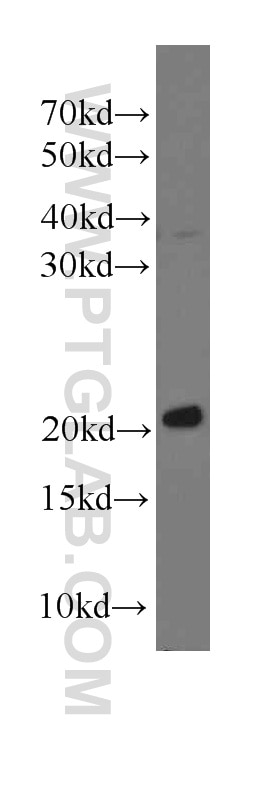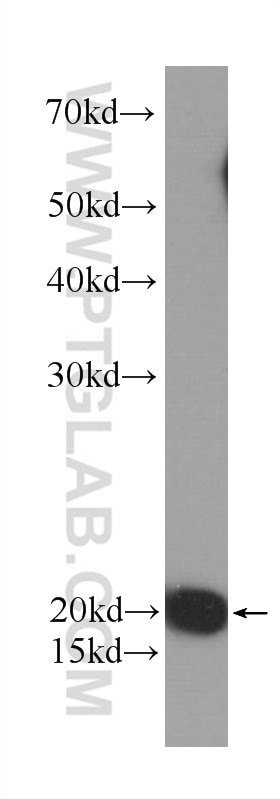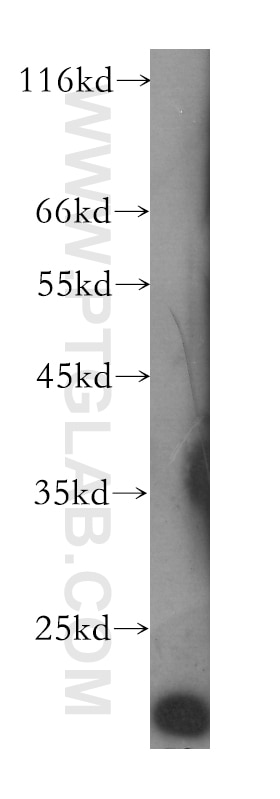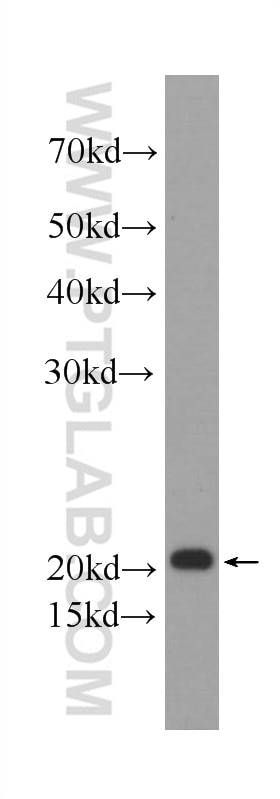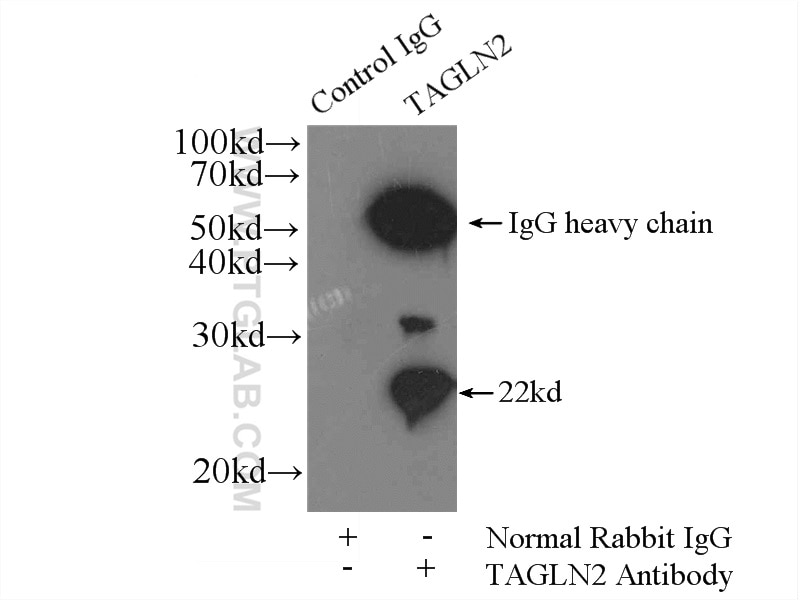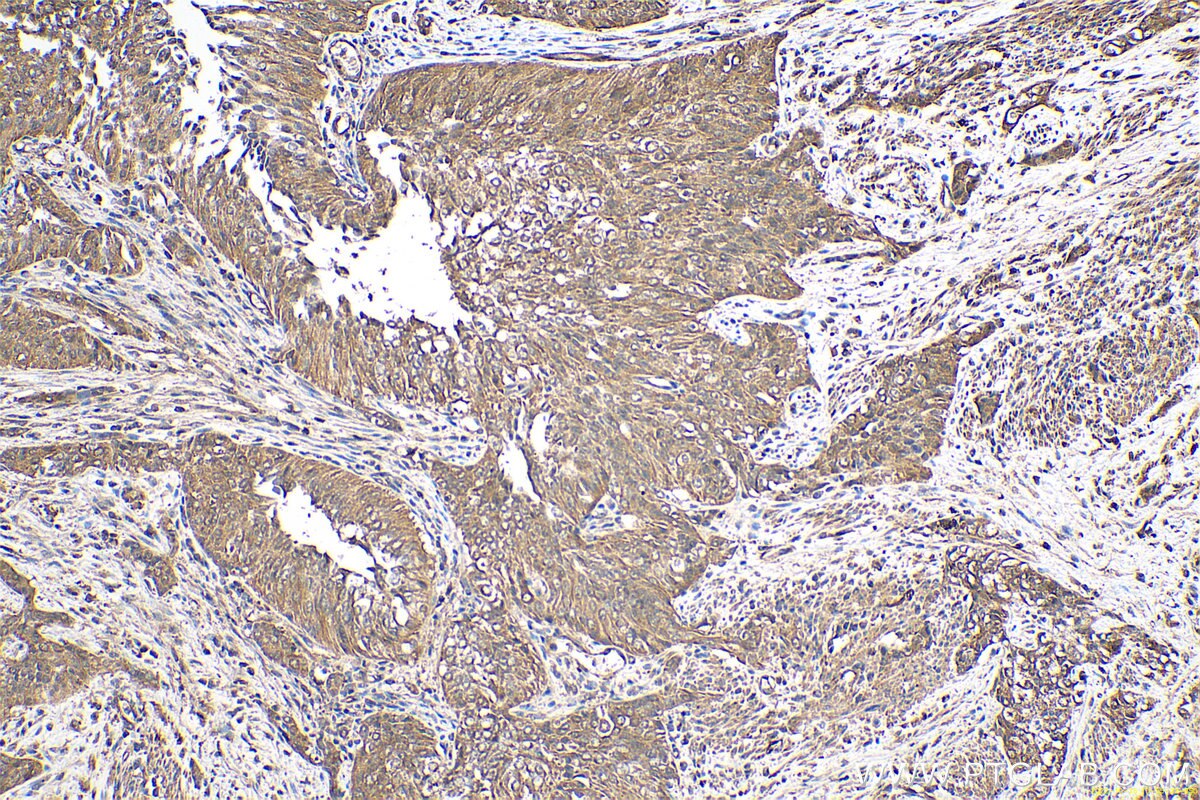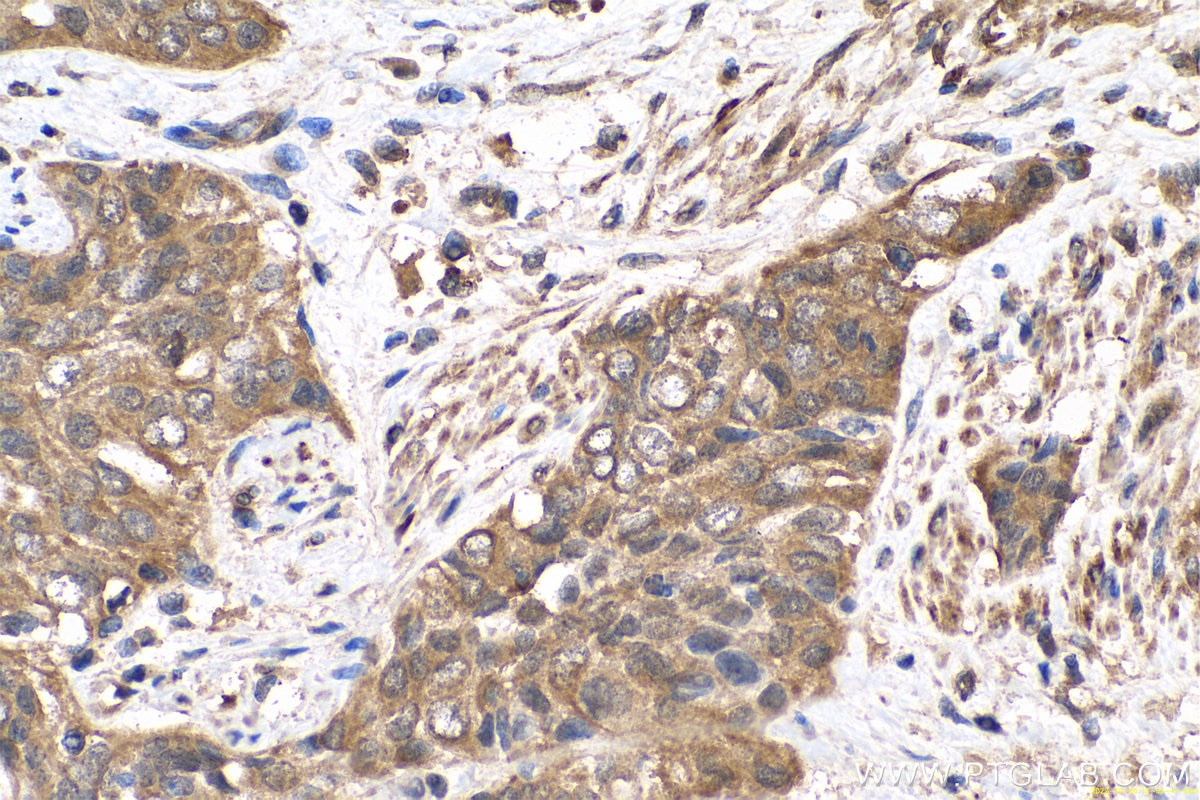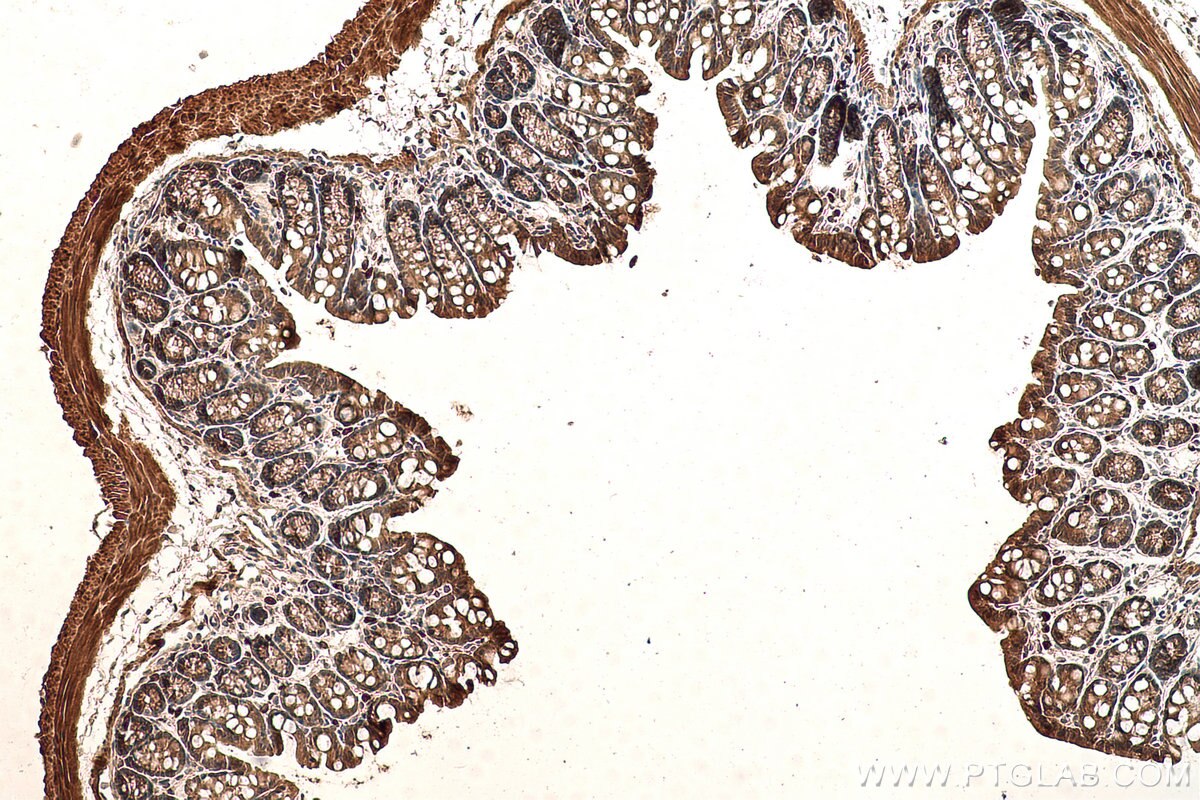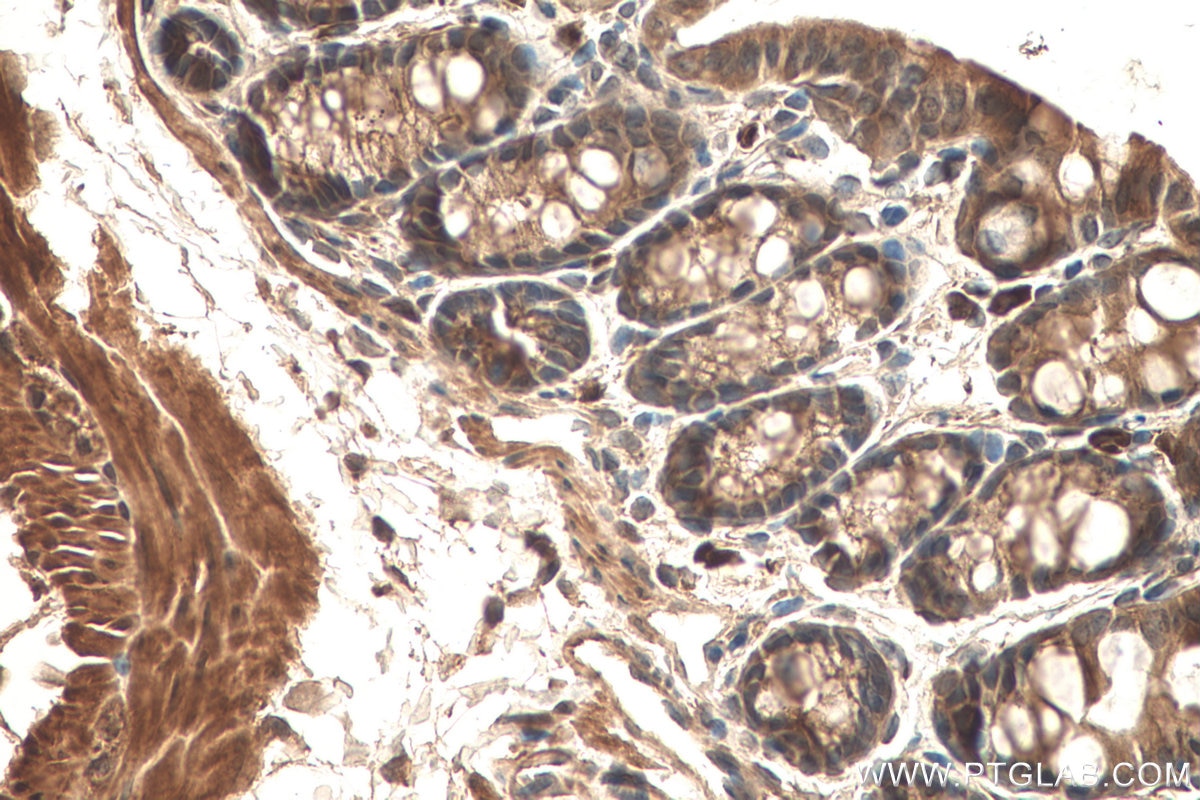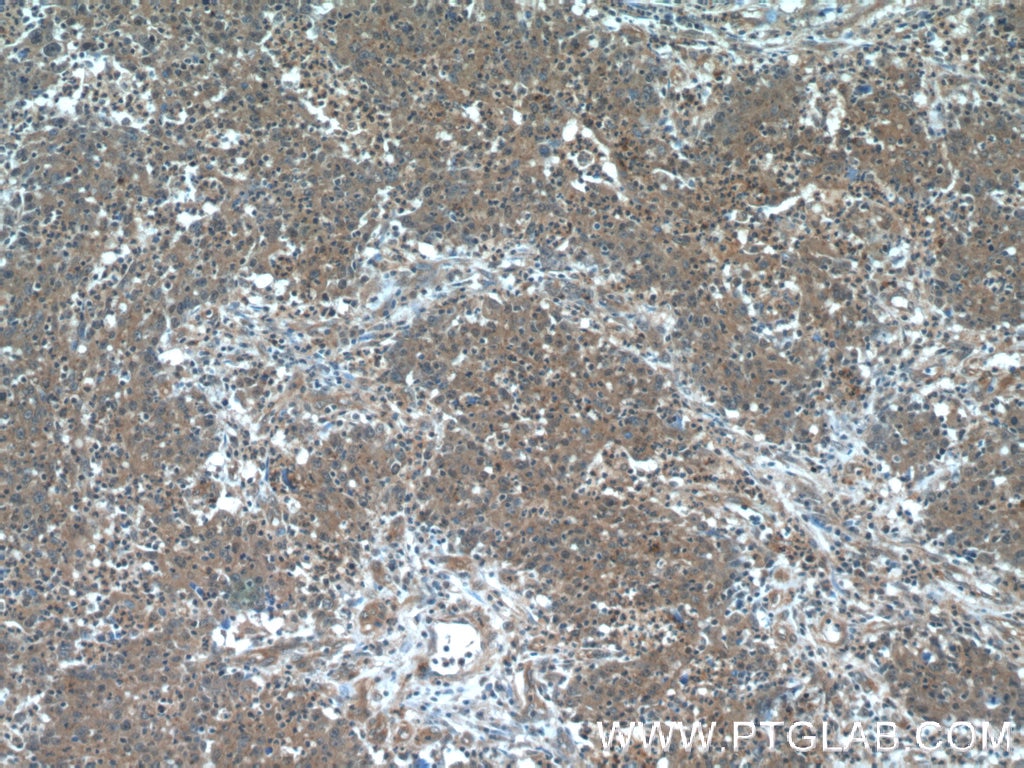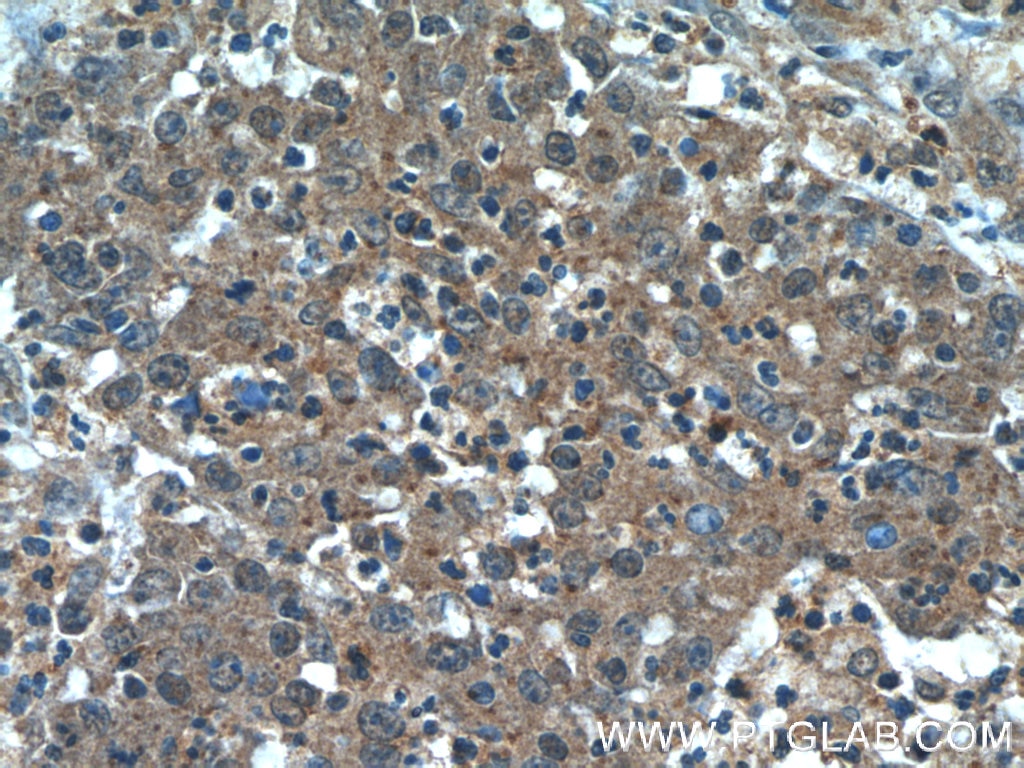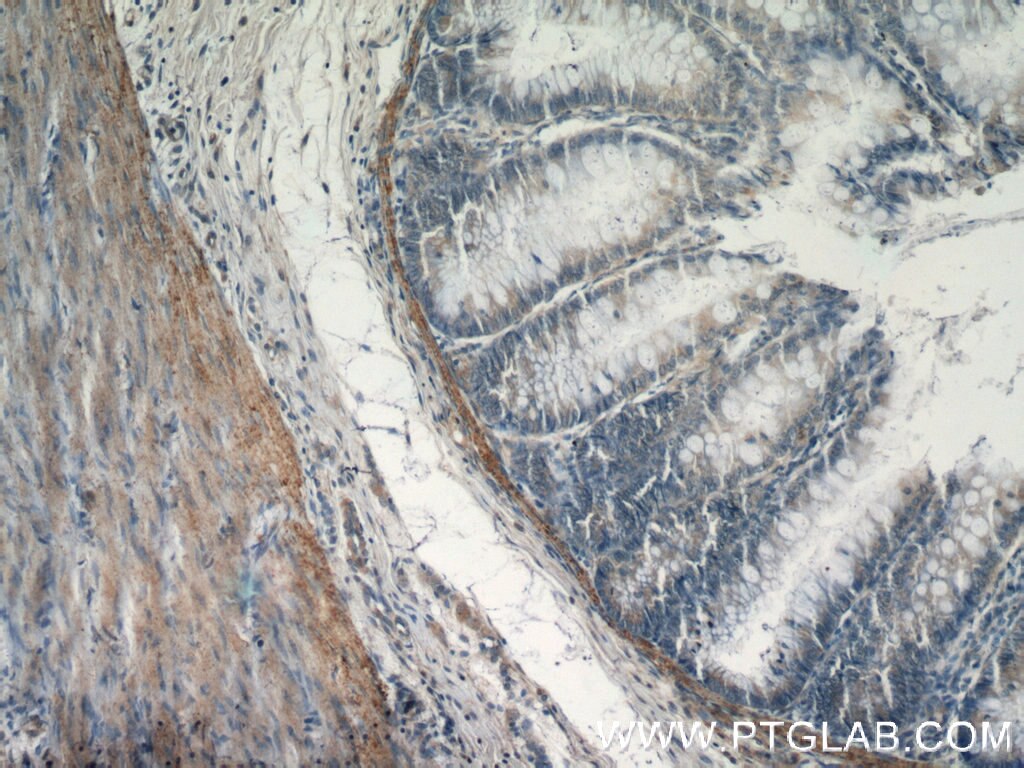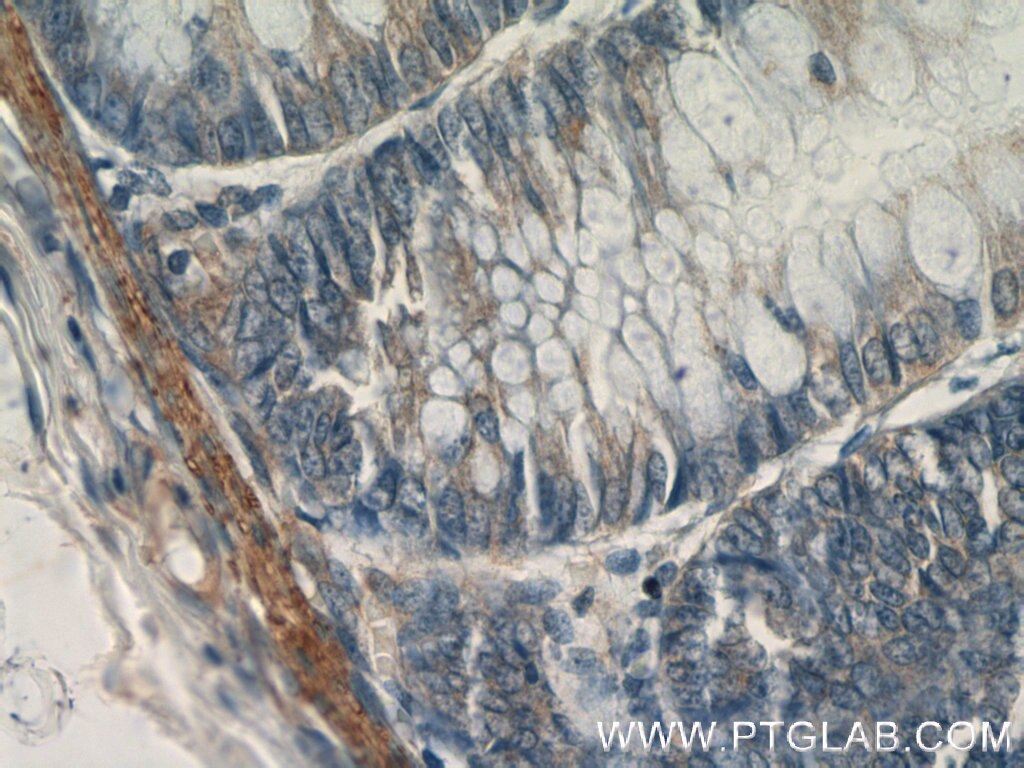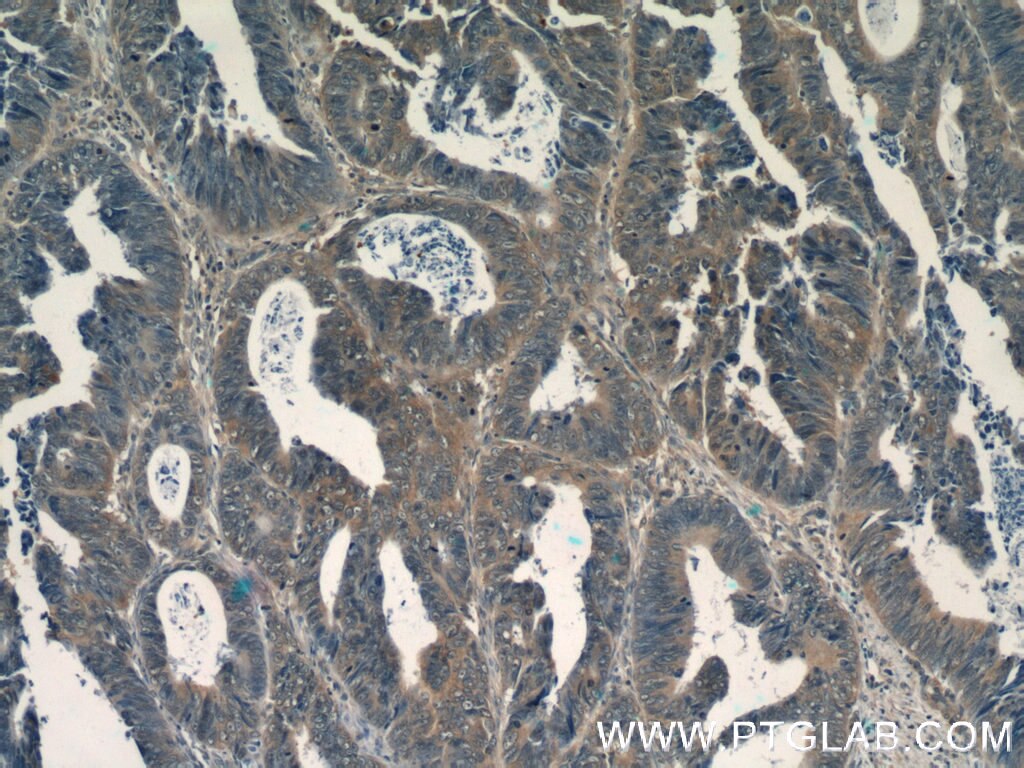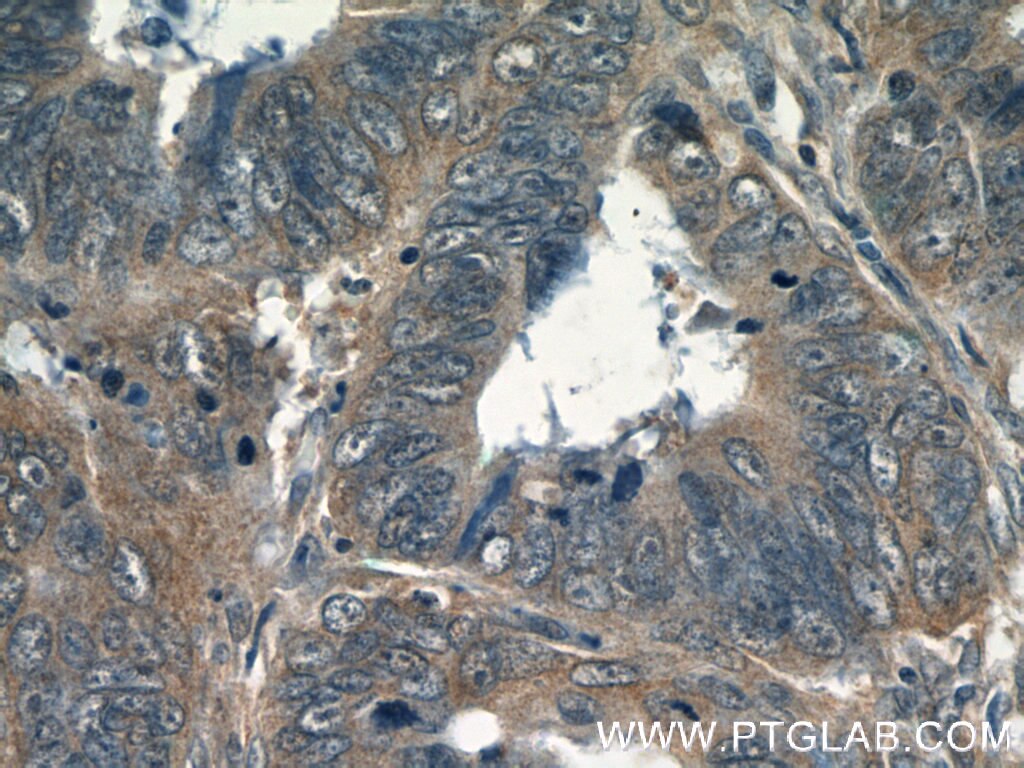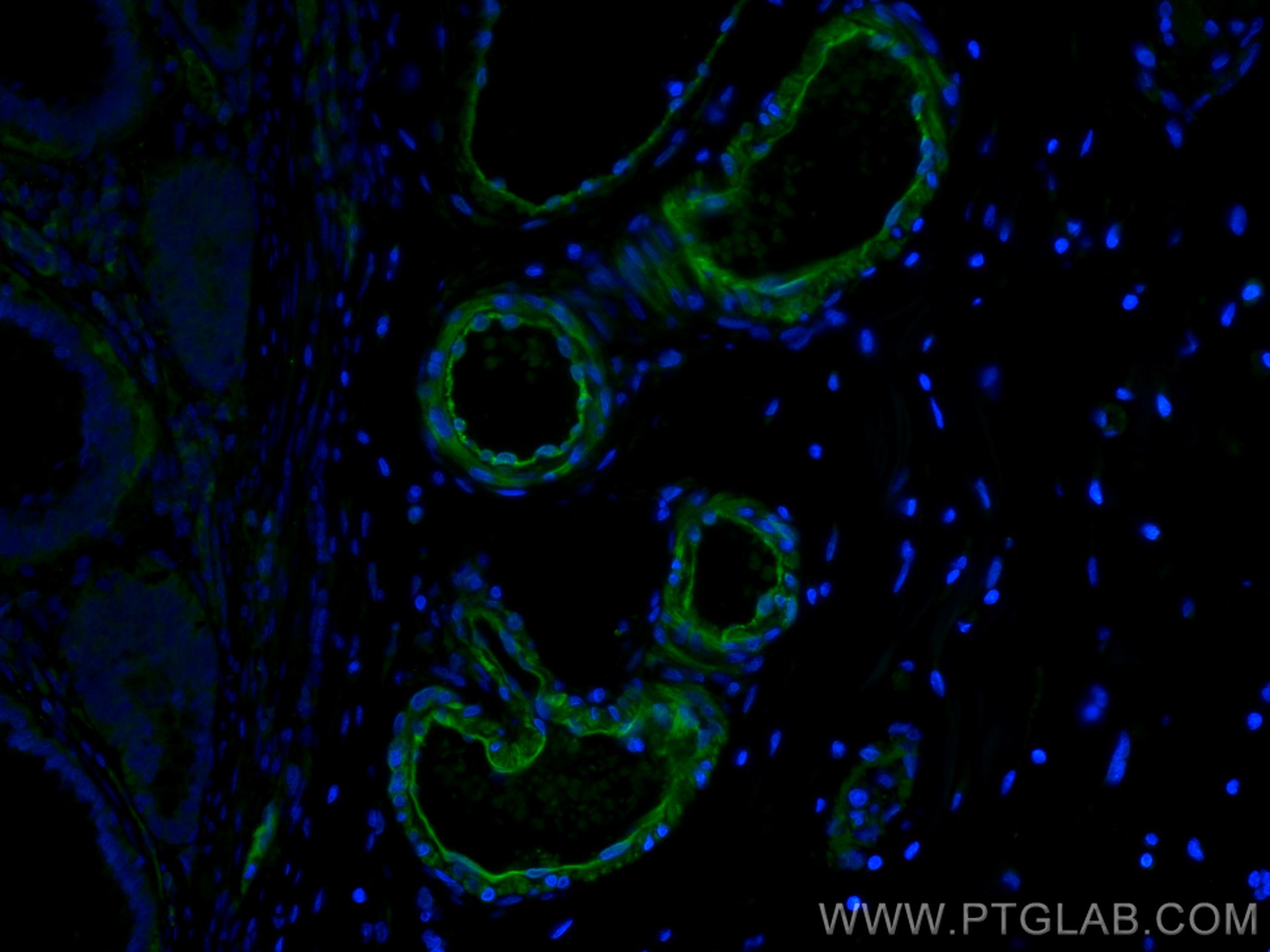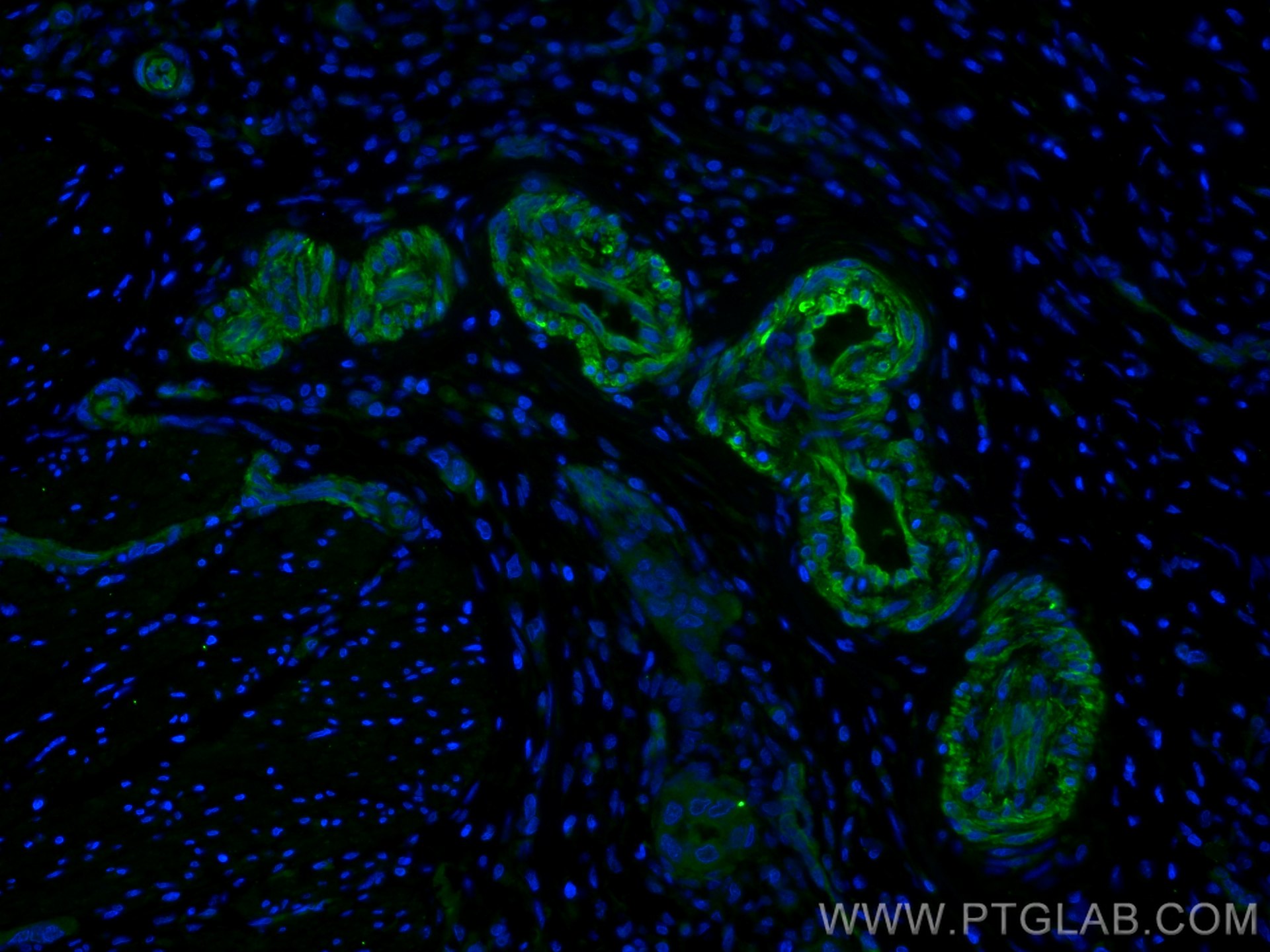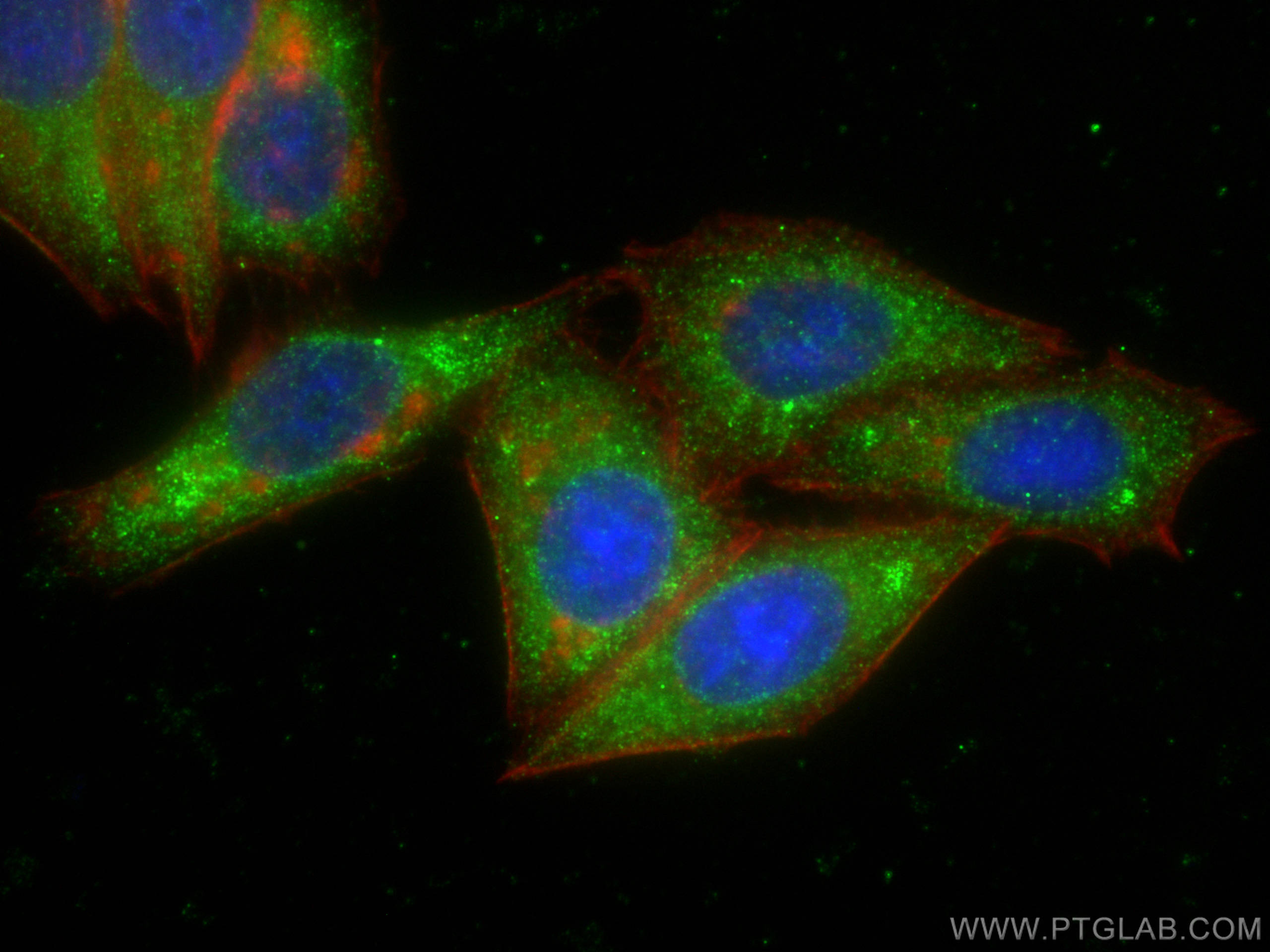Validation Data Gallery
Tested Applications
| Positive WB detected in | K562 cells, A549 cells, HEK-293 cells, MCF-7 cells |
| Positive IP detected in | HEK-293 cells |
| Positive IHC detected in | human urothelial carcinoma tissue, human colon tissue, human colon cancer tissue, mouse colon tissue Note: suggested antigen retrieval with TE buffer pH 9.0; (*) Alternatively, antigen retrieval may be performed with citrate buffer pH 6.0 |
| Positive IF-P detected in | human colon cancer tissue |
| Positive IF/ICC detected in | HepG2 cells |
Recommended dilution
| Application | Dilution |
|---|---|
| Western Blot (WB) | WB : 1:500-1:2000 |
| Immunoprecipitation (IP) | IP : 0.5-4.0 ug for 1.0-3.0 mg of total protein lysate |
| Immunohistochemistry (IHC) | IHC : 1:250-1:1000 |
| Immunofluorescence (IF)-P | IF-P : 1:200-1:800 |
| Immunofluorescence (IF)/ICC | IF/ICC : 1:400-1:1600 |
| It is recommended that this reagent should be titrated in each testing system to obtain optimal results. | |
| Sample-dependent, Check data in validation data gallery. | |
Published Applications
| KD/KO | See 1 publications below |
| WB | See 5 publications below |
| IF | See 2 publications below |
| CoIP | See 1 publications below |
Product Information
60044-1-Ig targets Transgelin 2 in WB, IHC, IF/ICC, IF-P, IP, CoIP, ELISA applications and shows reactivity with human, mouse samples.
| Tested Reactivity | human, mouse |
| Cited Reactivity | human, mouse |
| Host / Isotype | Mouse / IgG1 |
| Class | Monoclonal |
| Type | Antibody |
| Immunogen | Transgelin 2 fusion protein Ag0337 相同性解析による交差性が予測される生物種 |
| Full Name | transgelin 2 |
| Calculated molecular weight | 199 aa, 22 kDa |
| Observed molecular weight | 22 kDa |
| GenBank accession number | BC002616 |
| Gene Symbol | Transgelin-2/TAGLN2 |
| Gene ID (NCBI) | 8407 |
| RRID | AB_2271433 |
| Conjugate | Unconjugated |
| Form | Liquid |
| Purification Method | Protein G purification |
| UNIPROT ID | P37802 |
| Storage Buffer | PBS with 0.02% sodium azide and 50% glycerol , pH 7.3 |
| Storage Conditions | Store at -20°C. Stable for one year after shipment. Aliquoting is unnecessary for -20oC storage. |
Background Information
The transgelin family is a group of proteins that belong to 22 kDa actin-related corpnin superfamily. Of all three isoforms, transgelin 1 is the best characterized. Transgelin 1, also known as SM22 alpha, is a specific marker for differentiated smooth muscle cells. Transgelin 2, also known as SM22 beta, is expressed by both smooth muscle and non-smooth muscle cells in a temporally and spatially regulated pattern. Trangenlin 3, also known as NP25, is only found in highly differentiated neuronal cells. Our test result showed that this antibody Is specific to TAGLN2. It does not bind TAGLN1 and TAGLN3.
Protocols
| Product Specific Protocols | |
|---|---|
| WB protocol for Transgelin 2 antibody 60044-1-Ig | Download protocol |
| IHC protocol for Transgelin 2 antibody 60044-1-Ig | Download protocol |
| IF protocol for Transgelin 2 antibody 60044-1-Ig | Download protocol |
| IP protocol for Transgelin 2 antibody 60044-1-Ig | Download protocol |
| Standard Protocols | |
|---|---|
| Click here to view our Standard Protocols |
Publications
| Species | Application | Title |
|---|---|---|
Mol Med Rep Downregulation of transgelin 2 promotes breast cancer metastasis by activating the reactive oxygen species/nuclear factor‑κB signaling pathway.
| ||
Nat Commun Soluble TREM2 ameliorates tau phosphorylation and cognitive deficits through activating transgelin-2 in Alzheimer's disease | ||
Cell Signal TAGLN2 targeted control of ARPC5-mediated activation of the MEK/ERK signaling pathway influences the proliferation, invasion, and metastasis of pancreatic cancer cells | ||
Anal Chim Acta Thermostability-assisted limited proteolysis-coupled mass spectrometry for capturing drug target proteins and sites | ||
Cancer Lett Unveiling the role of TAGLN2 in glioblastoma: From proneural-mesenchymal transition to Temozolomide resistance |
